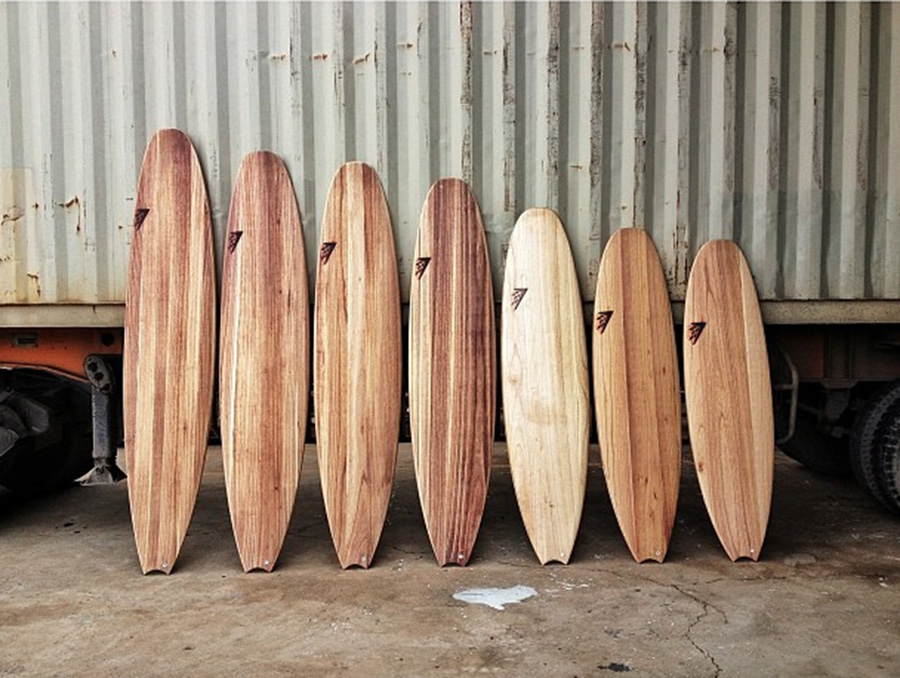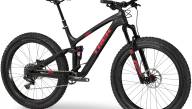tags:
wooden surfboards |trend talk |sustainable surfboards |heather hansman |gear |eps blanks |environmental initiatives
Surfers—to make a sweeping generalization about a group that ranges from air-reversing eight-year-olds to longboarding grandpas—tend to be environmentally careful. They ride bikes to the beach, they stage statewide beach cleanups, and they’re not burning CO2 by spinning chairlifts.
But for most surfers, every time they paddle out, they’re on a board made of fossil fuels. When board technology evolved from wood to light and shapeable foam like polyurethane, surfing became unsustainable. “The surfboard is the core of surfing culture, and it is also one of the most toxic vehicles in action sports,” says Michael Stewart of the environmental non-profit Sustainable Surf, which aims to address environmental issues that threaten the world’s oceans.

Thanks to a reliance on wood, manufacturers like Grain are building surfboards that are easy on the eyes and the environment. Photo by Nick LaVecchia.
The most commonly produced boards in the country are made of PU foam and glassed with polyester. Both of these CO2-based materials are carcinogenic and don’t break down over time.
Surfing is a $7 billion dollar industry, and there are an estimated 1.7 million surfers in the U.S. alone, which means that there are a lot of broken surfboards in landfills, and a lot of boards getting hot coated in carbon each day. According to a 2009 UC Berkeley study, a 5.5 lb EPS/epoxy shortboard causes over 600 lb of CO2 to be emitted over its lifecycle.
The toxicity of the surf industry has been garnering attention for a while. In 2005, San Clemente, California-based Clark Foam, which at the time was making 90 percent of the foam blanks in the country, shut down because of pressure from the EPA. Fortunately, board manufactures, shapers, and industry groups are now trying to make surfboard production—and with it surfing—more environmentally friendly.
There are three main ways that manufacturing is getting greened up: shapers and companies are making boards from recycled materials, using less toxic resin and making boards from sustainable new materials.
In terms of recycled material, EPS (or extruded polystyrene foam) has gained momentum as an alternative to PU. You’ve seen it before: it’s the same white Styrofoam your cheap cooler is made of, but it’s recyclable and can be ground up and reformed into blanks. Companies like Marko Foam are now making boards out of 60 percent recycled EPS.

One of Kelly Slater's recent Channel Islands quivers. Increasingly, Slater is relying on EPS blanks.
EPS took awhile to gain recognition because many shapers thought it didn’t perform as well as traditional blanks. It has, however, slowly gained credibility and companies like Channel Islands are now shaping a lot of boards out of EPS. Kelly Slater, who is known for his dedication to environmental causes, reportedly has some low-impact boards in his quiver.
Although using recycled EPS can reduce a surfboard’s environmental impacts, it’s just one part of a complex challenge. Few current boards are being made from recycled EPS, so there is still a lot of new foam being created. Furthermore, many other materials used in surfboard production are often not repurposed or recycled.
The polyester resins used to glass PU boards are toxic and carbon-based, and high VOC resins are bad for the people glassing the boards, so moving towards bio-based resins is another place where the surf industry can clean itself up. There are a few companies making non-toxic resins—Entropy is the most common right now—but it’s a space where there could be a lot of change and growth.
The most interesting way shapers are cutting carbon is by making boards out of nonpetroleum-based materials like bamboo, cardboard, carbon, or—a novel idea—wood. In Maine, Mike LaVecchia is making Grain Boards out of local northern white cedar, while in Hawaii Gary Young shapes bamboo. Mike Sheldrake, a former computer programmer, built a honeycomb cardboard board that can be built from a kit he sells (
By blending wood with EPS foam, Firewire aims to reduce its environmental impact.
Organizations like Sustainable Surf are working to create endemic change, and establish baselines for production and output. They’re also looking to lower the carbon footprint of the entire surf industry.
So what can you do if you need a new board but you want to limit how much CO2 your surfing habit is creating? You can break out the old school Alaia, or you can invest in a board that’s made from less terrible materials. One of Sustainable Surf’s projects is a set of Ecoboard benchmarks that establish criteria for deeming a board environmentally friendly.
A finished surfboard can be sold with the Ecoboard mark if it meets at least one of these three requirements:
– A foam blank with a minimum of 40 percent recycled content, or at least 40 percent biological (non-petroleum) content.
– A board glassed with epoxy resin containing at least 15 percent biological content.
– A wood blank (a number of board makers have returned to surfing’s roots by making boards of lightweight woods).
Sustainable Surf states that these standards serve as their baseline for reducing waste and carbon while still holding boards to a high standard of production and performance. If you want to see which companies are committed to reducing their environmental impacts, the organization offers a list of brands that are on board, and it includes big guns like Hobie and Lost. The organization is raising awareness, and so far, companies and surfers have been supportive.

The shapers at Grain keep busy crafting hollow wooden surfboards at their workshop in Maine. Needless to say, Grain keeps its environmental footprint small. Photo by Nick LaVecchia.






















